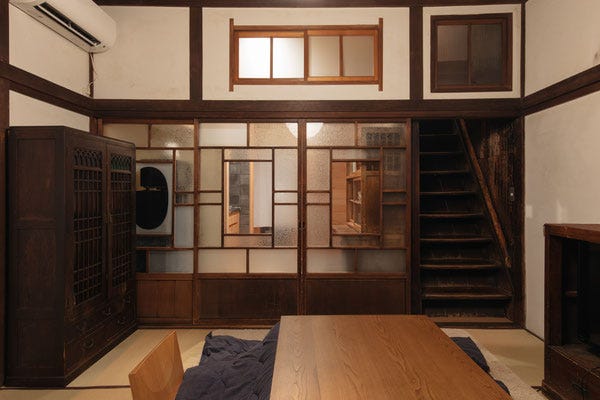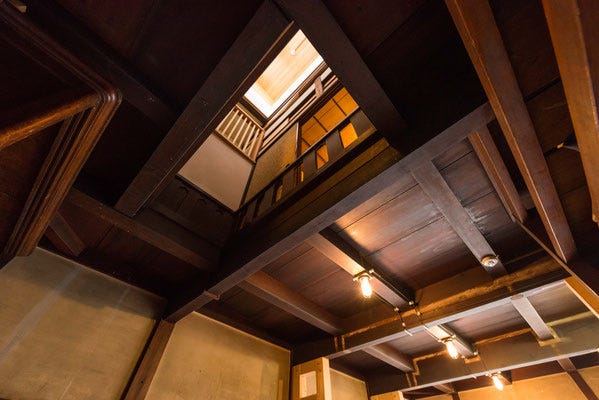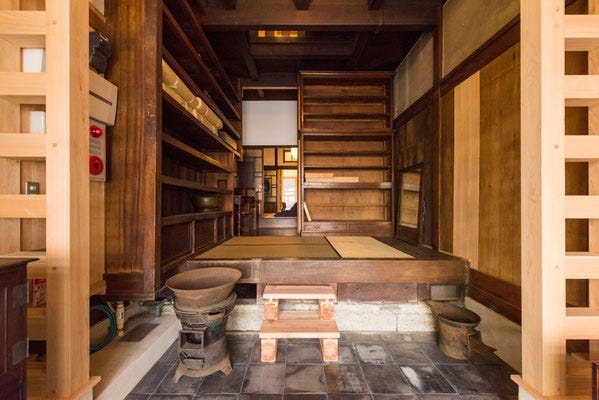When exploring Tokyo, it’s easy to get swept away by its skyline and neon-lit streets (West-Shinjuku or Kabukicho for example). Yet, hidden among the urban sprawl are fascinating remnants of recent history, and kanban kenchiku 看板建築 - or "signboard architecture" - offers a unique window into early 20th-century Japan. These buildings are not just cool relics; they are stories frozen in time, embodying the resilience and creativity of Tokyo’s reconstruction post the big 1923 earthquake. Let’s dive into what makes this architectural style so special and why you should add it to your Tokyo itinerary.
Credit: Ebihara Shoten
What Is Signboard Architecture?
Kanban kenchiku refers to a distinctive style of shop-and-residence architecture that gained popularity during the Taishō (1912–1926) and early Shōwa (1926–1989) eras, particularly in the aftermath of the Great Kantō Earthquake of 1923. Designed to make the most of narrow plots, these buildings combine functionality with aesthetic appeal. Their defining feature is the ornate Western-style facade, which serves as a "signboard" to attract attention. Behind this decorative frontage, however, lies a practical wooden structure built in the traditional Japanese style, housing a shop on the ground floor and living quarters above.
Why It’s Cool
Kanban kenchiku shows us Japan’s rapid modernization during the early 20th century. Its mix of Western art deco styles and traditional Japanese housing speaks to a period when Japan was eager to embrace new trends while holding onto its identity.
Many of these buildings were part of Tokyo’s reconstruction efforts after the Great Kantō Earthquake. They are physical reminders of the city’s ability to rebuild and innovate during challenging times, making them a symbol of resilience and creativity.
I myself haven’t seen many from the inside, but just looking at the copper-facades sometimes with painted details, tile work, or plaster reliefs, is quite something. Inside, there are quite innovative designs that help people utilize natural light, such as skylights and atriums. Also make sure to check out the layout to see where the owner’s shop ends and his or her residence starts.
Why You Should Visit Ebihara Shoten
Kanban kenchiku has largely disappeared from Japan’s cities - due to urban redevelopment, rising land prices, and the preference for modern buildings. 1920s structures understandably have limited durability, are vulnerable to fires and earthquakes, and there is also a lack of preservation efforts when it comes to older buildings (Check Zoe Ward’s LinkedIn account for more on this). As post-war architectural trends shifted toward modern designs, many kanban kenchiku were demolished to make way for profitable and technologically advanced developments. Only recently has their cultural value been recognized, prompting efforts to preserve the few remaining examples as vital records of local craftsmanship and architectural history.
One of the finest examples of kanban kenchiku still left is Ebihara Shoten 海老原商店, built in 1928 (see the photos above). Located near JR Akihabara Station, it stands as a rare survivor in an area now dominated by modern developments. (There is a hotel on the opposite side of the road…)
In the accompanying images, you can observe the ground-floor living room or office area in the top-left photo. On the top-right, a skylight connects the ground floor to the second floor, creating a sense of openness. The bottom-left image shows the entrance area, where large shelves were once used to store textiles. The bottom-right photo offers a view from the opposite perspective, capturing the entrance area from the inside. Isn't it remarkable how beautifully the light filters through, adding warmth and charm to the space?




Credit: Ebihara Shoten
How to Explore kanban kenchiku in Tokyo if Ebihara Shoten does not have an event on.
While Ebihara Shoten is a must-visit, it’s only open to the public for special events (check their instagram account for info), you can check out examples at the Edo-Tokyo Open Air Architecural Museum (Edo-Tokyo Tatemono-en). It offers a unique opportunity to explore kanban kenchiku. The museum’s “main street” replicates the atmosphere of late Taisho and early Showa eras with kanban kenchiku’s iconic copper-sheeted store fronts and reconstructed shops featuring authentic period details like hand-cranked cash registers, providing a vivid glimpse into daily life at the time. By preserving and recreating these structures and their interiors, the museum highlights the cultural and historical significance of kanban kenchiku and its impact on Japan's urban development.
If you cannot visit Tokyo, but are interested - here’s a couple of books with lovely photos (I own all three of them):
Fujimori Terunobu and Masuda Akihisa. (1988). Toshi no Jaanarizumu: Kanban Kenchiku. Sanseidō.
Hagino Masakazu. (2019). Kanban Kenchiku. Shōwa no shōten to kurashi. Two Virgins.
Miyashita Jun’ya. (2019). Kanban Kenchiku-zukan. Daifuku shorin.




